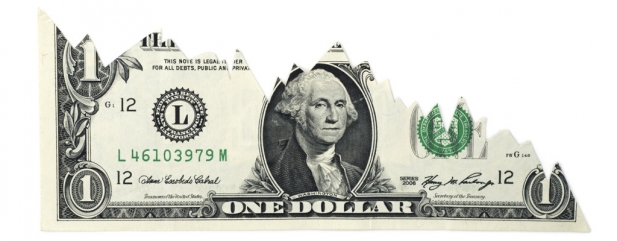Archived article
Please note that tax, investment, pension and ISA rules can change and the information and any views contained in this article may now be inaccurate.
Why is the dollar struggling?

The dollar is performing in a strange manner as it is failing to conform to tradition and appreciate in value when the yields of US government debt are rising.
The increased return on offer, particularly relative to that available from the debt of other governments, would usually attract foreign investment. This, in turn, would inflate demand for, and the value of, the home country’s currency.
But according to data from exchange-traded fund provider PowerShares the US dollar index, which measures the performance of the dollar against several other major currencies, is down 12% since it peaked at the end of 2016.
PowerShares’ head of multi-asset research Paul Jackson reckons explanations for the weakness, including the deficit, the unpredictability of Donald Trump and better economic conditions outside the US, are unconvincing.
He says: ‘Leaving aside the effects of a full-blown trade war, which we think would be dollar negative, we believe the dollar is in line with long term norms and that in the short term it may adjust upwards to “re-converge” with yield spreads.’
Jackson notes this would be positive for non-US equities and negative for dollar-denominated commodities.
UK-listed companies with substantial US sales which would see the most benefit from dollar strength include equipment hire firm Ashtead (AHT) and plumbing products business Ferguson (FERG). (TS)
Important information:
These articles are provided by Shares magazine which is published by AJ Bell Media, a part of AJ Bell. Shares is not written by AJ Bell.
Shares is provided for your general information and use and is not a personal recommendation to invest. It is not intended to be relied upon by you in making or not making any investment decisions. The investments referred to in these articles will not be suitable for all investors. If in doubt please seek appropriate independent financial advice.
Investors acting on the information in these articles do so at their own risk and AJ Bell Media and its staff do not accept liability for losses suffered by investors as a result of their investment decisions.
Issue contents
Big News
- AJ Bell customers given priority access to company’s IPO share offer
- An increasing number of investment trust dividend heroes
- Spring Statement reveals (slightly) improved economic picture
- Gem Diamonds is on a roll with high quality discoveries
- Time is running out for GKN shareholders to vote on Melrose takeover offer
- Labour strike risk could lead to higher copper price
- Why is the dollar struggling?
- Big fall in London house prices
- Aviva under fire for plan to cancel high-yielding shares

 magazine
magazine








